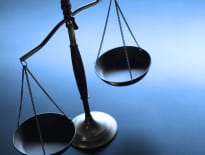Residents, lawmakers and transit officials agree: thanks to several compounding factors, the congestion in East Boston has reached a critical mass. The Department of Transportation is working to come up with a long-term solution, but in the meantime, state Rep. Adrian Madaro, D-East Boston, and state Sen. Joseph Boncore, D-Cambridge, want to tackle the issue through legislation.
The duo filed a package of bills that would require the state to conduct an in-depth traffic study, implement a pilot program to change the Sumner Tunnel’s tolls based on congestion, scale fees on ridesharing trips based on the trip’s cost and charge Uber and Lyft drivers $3 for every time they enter or exit Logan Airport without a passenger. Madaro said 5 million of the 12 million Uber and Lyft rides to or from Logan in 2018 had no passengers, contributing to congestion in the area.
“I don’t ever remember a time when traffic was as bad as it is right now in East Boston,” Madaro said. “You’re talking congestion throughout every arterial street in East Boston. It is not just on the highway or just on the main streets. These are dense residential streets that have never experienced traffic before that are now under siege.”
State officials say the situation in East Boston stems not from a single stressor but instead from a combination of trends. One of the biggest has been the rise of GPS-enabled navigation apps, which often direct drivers to side roads as a way to avoid typical highway traffic. Another component is the airport. Logan saw an increase of about 5 million passengers per year, or about 15 percent, between 2015 and 2017, according to state data. That means more trips are headed through East Boston to get there, particularly after a change in policy about two years ago allowed rideshare apps to make airport pickups.
The Sumner Tunnel has also seen a surge of traffic in recent years that took leaders by surprise. State estimates in 2013 forecast that daily traffic volume would increase a total of 2.5 percent over the next five years. Data released last fall showed that traffic during that span actually increased more than 46 percent.
Last year, the MAPC released a report on the effects of rideshare services that found the apps are often directly replacing mass-transit rides, contributing to congestion and leeching revenue from the MBTA.
“The real thing we’re trying to push is behavior change,” said Lizzi Weyant, director of government affairs for the MAPC. “The only way we actually reduce congestion is to get more people taking fewer cars, not more people taking more cars. If we can increase the fee, our goal is to ultimately change the behavior so that people revisit the option of taking the T or are more encouraged to take shared rides.”




 |
| 

